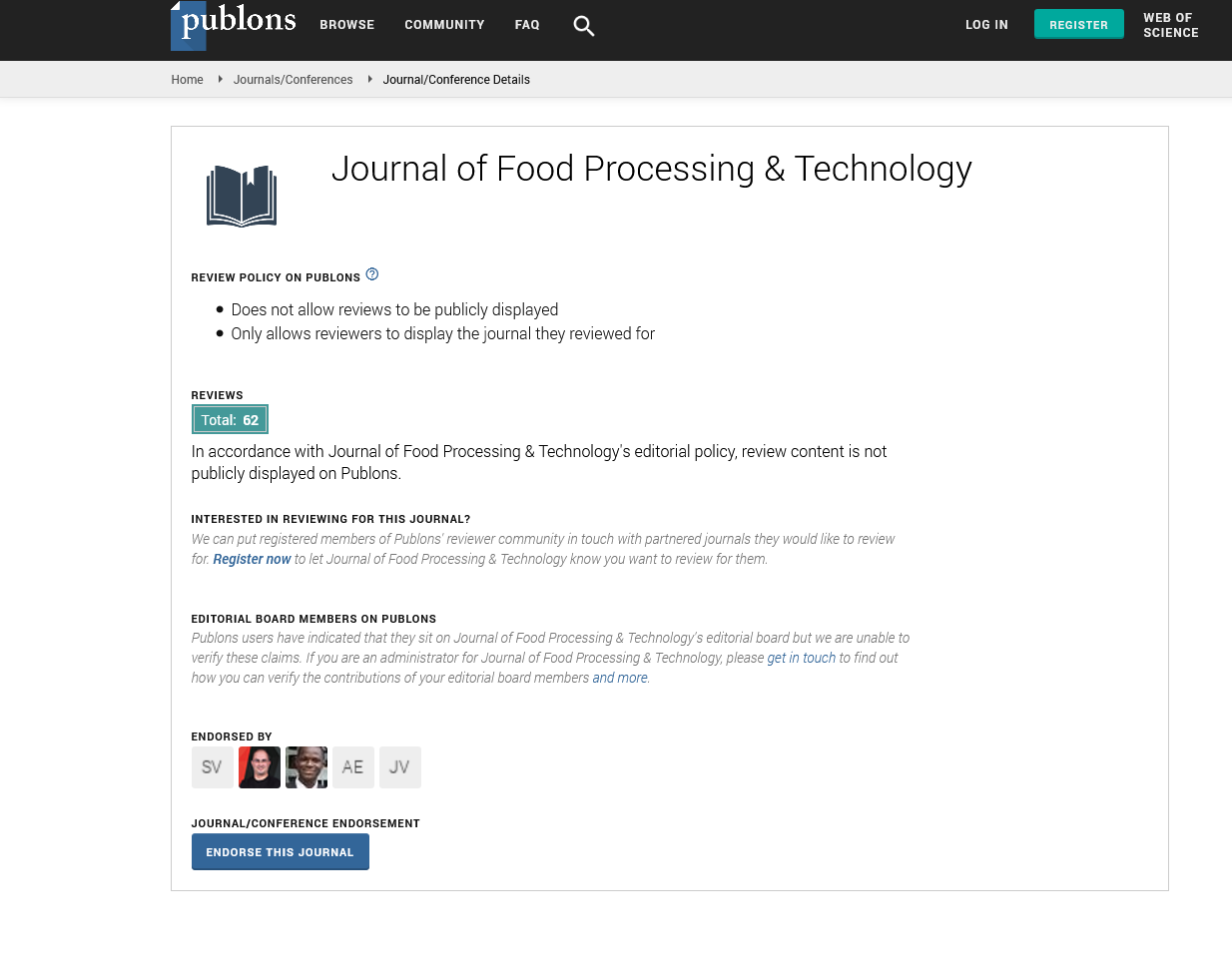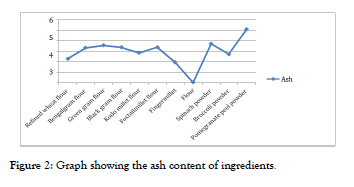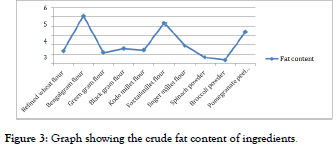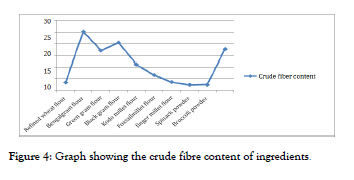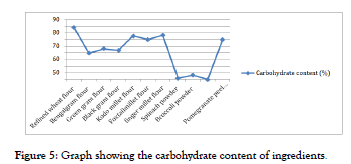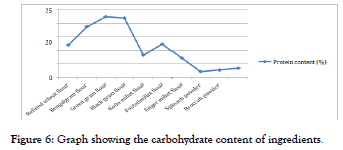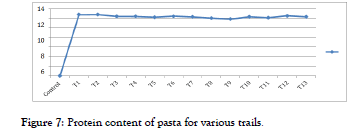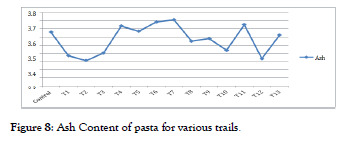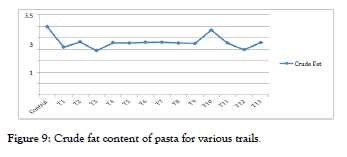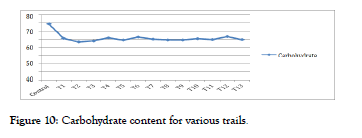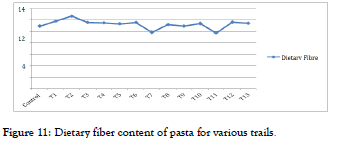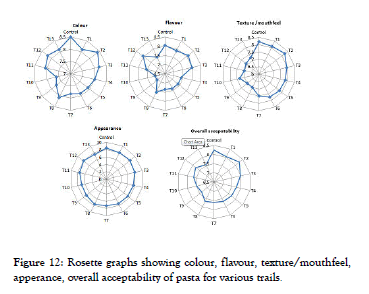Indexed In
- Genamics JournalSeek
- Academic Keys
- JournalTOCs
- China National Knowledge Infrastructure (CNKI)
- Access to Global Online Research in Agriculture (AGORA)
- Centre for Agriculture and Biosciences International (CABI)
- RefSeek
- Directory of Research Journal Indexing (DRJI)
- Hamdard University
- EBSCO A-Z
- OCLC- WorldCat
- Scholarsteer
- SWB online catalog
- Publons
- Euro Pub
- Google Scholar
Useful Links
Share This Page
Journal Flyer
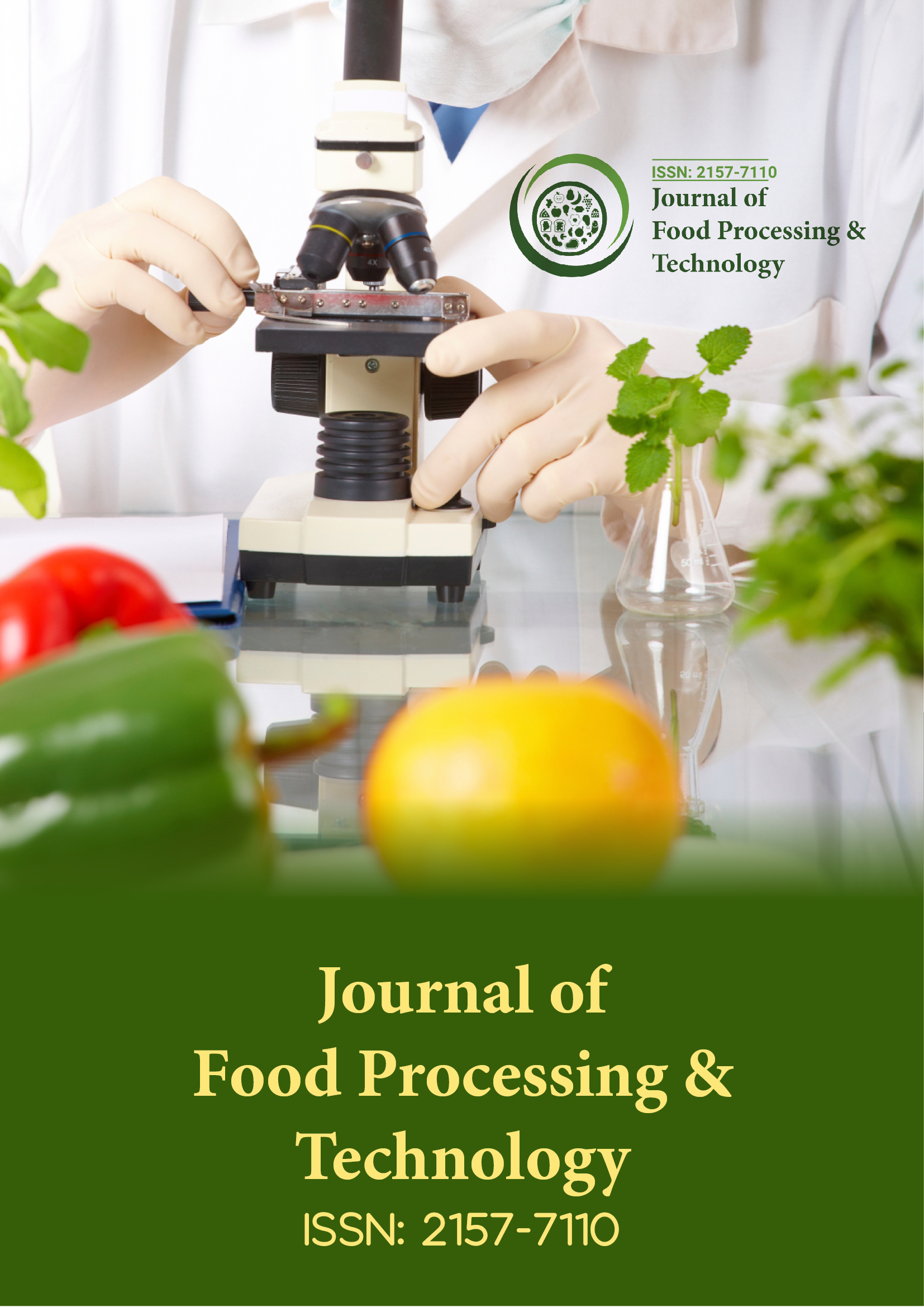
Open Access Journals
- Agri and Aquaculture
- Biochemistry
- Bioinformatics & Systems Biology
- Business & Management
- Chemistry
- Clinical Sciences
- Engineering
- Food & Nutrition
- General Science
- Genetics & Molecular Biology
- Immunology & Microbiology
- Medical Sciences
- Neuroscience & Psychology
- Nursing & Health Care
- Pharmaceutical Sciences
Research Article - (2020) Volume 11, Issue 8
Development and Optimization of Low Glycemic Index Pasta Using Multi Component Mixture Design
Manasa Pachipulusu, Swathi Jarugulla, Akhila Macharla and Raviteja Thanda*Received: 19-Jun-2020 Published: 07-Aug-2020, DOI: 10.35248/2157-7110.20.11.839
Abstract
This study explains about the benefits of low Glycemic Index (GI) diets over high protein foods. Low GI diets may helpful for the management of obesity by modulating appetite. Multi component mixture design was employed to optimise the cooking conditions of the pasta prepared by incorporating the pulses flour (Green gram (25), black gram (41), Bengal gram (8)), millets flour (Foxtail millet, Finger millet, Kodo millet), and green leafy vegetable flour (raw spinach flour (15) broccoli flour (10)). Millets flour, pulses flour, green leafy vegetables flours were incorporated in the level of (50-55)%, (30-35)%, (10-15)% respectively. The selected formulation trail-2 millets flour (X1-52.5%), Pulses flour (X2-35%), green leafy vegetables powder flour (X3-12.5%) aimed at reduction of calorie value while providing an average increase of crude fibre and protein content. Optimised pasta showed higher protein, dietary fibre content than the control. After the preparation of pasta the physico-chemical properties were analysed by standard procedures for total dietary fibre, total ash content, total fat, moisture content, water absorption, crude protein. Pasta added with these flours might be a dietetic alternative for people with low calorie requirements.
Keywords
Multi component mixture design; Low GI diets; Physico-chemical properties; Dietetic alternative
Introduction
Now days the developing countries are facing the major challenges are:
• To offer to their aging population a real opportunity to live, not only longer, but also healthier
• To provide to more and more nutritious ready to eat foods for their busy consumer
Mixture experimental designs are suitable for food products that require a composition or a mixture of key ingredients, since the proportions of the ingredients in the mixture, and their levels are dependent on each other, and the sum of all components is always 100% [1].
Pasta is a popular food with a high rate of acceptance in many population groups (fitness enthusiasts, children, adolescents, and the elder). Pasta has universal appeal and acts as an excellent carrier for supplying nutrition for a section of people who are health conscious. The addition of increasing levels of fiber in a long way improves the health status of huge majority of health conscious population who are the main target of this study [2].
Moreover, new ingredients can be readily incorporated in pastamaking processes. Pasta was widely consumed throughout the world and it is a rapid growing sector of the food industry, this is because pasta was convenient, easy to cook, cheaper and have a reasonably long-shelf-life. Pasta may be fortified or enriched. The storage of pasta depends on its processing conditions and level of drying. Uncooked pasta is kept dry and can keep in the cupboard for a year if air tight container and stored in a cool, dry place. Cooked pulses have a special place in the human diet because they contain nearly 2 to 4 times more protein than cereals, thus pulses flours have been used to fortify pasta and to improve its nutritional profile [3].
Pasta is a starchy food, has been shown to have a low glycemic index values, however, there are many different types of pasta available, and each type may have potentially different metabolic effects because of their physic-chemical properties, different surface areas and protein contents. Pasta may be easily added
with other ingredients such as vitamins, minerals, flavors, colorants, dietary fiber supplements, proteins, etc. with the objective to increase its nutraceutical characteristics. Nutritional benefits are enhanced when particularly different millets and pulses were added for the preparation of pasta [4].
The Glycemic Index (GI) refers to blood glucose raising potential of carbohydrate foods .The GI allows the classification of foods based on the post-prandial blood glucose response compared with the reference food. The numbers of low-GI foods were very limited, and accordingly much wider range of low-GI products will be required to make a well balanced low GI diet practicable. So, foods can be classified into three GI categories: they are low (>55), medium (55-69) and high (<70) GI. There is significant interest in lowering the GI of high digestible products since the long term intake of low GI foods, promoting small changes in blood glucose level after a meal, can decrease the long term risk of type 2 diabetes mellitus and can be favourable for prevention and control of obesity and metabolic risk factors, such as coronary heart diseases. In children and adults with diabetes, low GI diets may improve glycosylated haemoglobin levels without increasing LDL-C or the risk of hypoglycaemia. In healthy pregnant women, low GI diets reduce the risk of large gestational period age without increasing the number of small gestational age infants [5].
Spinach
Spinach (Spinacia oleracea) is a cool seasonal annual green leafy vegetable, which is an active source of phytochemical like betacarotene, chlorophyll and antioxidants. Spinach is an excellent dietary leafy vegetable packed with high amount of mineral and vitamin contents. Spinach are although under estimated are rich source of nutrition which include vitamins (A, B1, B6, C, E, K), minerals (iron, magnesium, calcium and potassium), and dietary fiber. Spinach has fall into the category of low glycemic index foods. Spinach also contains many important plant compounds including quercetin, kaempferol , lutein, nitrates and zeaxanthin which are linked to improve eye health, heart health, also decreases the risk of chronic and cancer disease and deflect infection and inflammation [6].
Broccoli
Broccoli has notoriety as a super food. It is low in calories but contains a wealth of antioxidants and nutrients that assists many aspects of human health. Broccoli offers vitamin C, and is an excellent source of beta carotene. Broccoli contains vitamins B1, B2, B3, B6, K, iron, magnesium, potassium, and zinc, a good source of folic acid and also provides fiber too. It also provides fiber and also low in calories [7].
Pulses have a reputation as low GI foods more than 30 years ago. Pulses are foods with interestingly low GI, since the lowest glycemic responses for starchy foods have been reported after consumption of pulses). It has been suggested from the past 20 years that purposeful selection of starches with low GI could potentially contribute to significant improvement of the conditions of diabetes.
Bengal gram
One of the most known benefits of Bengal gram is its ability to boosts the energy in your body, and Improves digestion. The fibre content in Bengal gram helps to improve your digestive system by improving the digestion process and averting constipation.
Green gram
Green gram is easiest to digest. It is considered that peptides that are present in high levels in these green grams prevented the contraction of blood vessels. The flavonoids isovitexin and vitexin have high free radical scavenging activities which help lower oxidative stress, the cancer causative factor. The various B complex vitamins, especially folic acid and B6, and magnesium help to regulate hormonal imbalance which cause these PMS symptoms.
Black gram
Black gram beans were unique among the legumes in having soluble mucilaginous polysaccharides. They tend to excellent levels of dietary fiber which works as a bulk laxative that helps to protect the colon mucosa by decreasing its exposure time to toxic substances as well as by binding to cancer-causing chemicals in the colon. Dietary fiber has also been shown to reduce blood cholesterol levels by decreasing re-absorption of cholesterol binding bile acids in the colon.
Foxtail millet
This grain is an outstanding source of potassium. The main functions of potassium in the human body include regulating fluid balance and controlling the electrical activity of the heart. Dietary fiber is also a star when it comes to keeping blood sugar levels (glucose) stable because it helps to prevent blood-sugar spikes following carbohydrate consumption and allows type 2 diabetics to keep better control of their blood-glucose levels.
Finger millet
Finger millet has extremely low glycemic index thus making its digestion process very slow and helping in keeping the blood sugar levels at a constant ratio. Calcium, thiamine, iron and are all present in plenty in finger millets. Finger millets are rich in dietary fiber and hence help in easy digestion.
Kodo millet
It is easy to digest, contains a high amount of lecithin and is very good for strengthening the nervous system. It is good for diabetics, its anti-diabetic compounds like ferulic acid, quercetin, p-hydroxyl benzoic acid, vanillic acid and syringic acid. It contains no gluten and is good for people who are gluten intolerant.
Pomegranate peel powder
Pomegranate peels are the utmost wastage in food industry and they are mostly discarded and are also under-utilized but they are excellent source of bio active compounds. Pomegranate peel
powders are rich in flavonoids, anthocyanin, reservertol which are the richest source of antioxidants. Besides high antioxidant capacity, pomegranate peel extracts have been reported to possess a wide range of biological actions including antimicrobial activity, anti-cancer activity, antidiarrheal activity, anti-genotoxic properties, apoptotic and, anti-tyrosinase activity, anti-diabetic, and anti-inflammatory activities. Instead of discarding this as waste it can be added to many food products as a functional ingredient and binder.
Our objective is to replace refined wheat flour with pulses flours, millets flour, and green leafy vegetables and to optimize processing conditions (particle size, water absorption). The main hypothesis of this investigation is that the replacement of refined wheat flour with millets, pulses, green leafy vegetables flours as an ingredients to achieve a nutritious, slowly digestible food, rich in dietary fibre and starch content.
Pre-Trails
Starting with a standard recipe for the production of pasta made from refined wheat flour (500 gm flour, 70 ml water, 5 gm salt, 2 gm pectin) by means of an experimental pasta making apparatus composed of screw press. Flour was mixed for 5 mins with water to obtain dough (agglomerated flour) suitable for extrusion and then pasta was boiled in water for 10 min and dried and then cooked
Materials and Methods
Procurement of raw materials
The basic ingredients of pasta (spinach, broccoli, and pomegranate) were obtained from the local vegetable market in Kakinada. Since good quality of fox tail millet, finger millet, kodo millet, Bengal gram, green gram, black gram are available in local market in the form of sealed pack, they were purchased from the local super markets. All the samples were visually inspected for fungal infestation, foreign materials and samples were cleaned prior to use.
Processing of raw materials
Millets flour:All the Millets were cleaned, rinsed for several times under running water, drained for 15 minutes and then allowed for overnight germination, dried at 60°C for 8 hours. Dried millets were ground into powder. The milled flour samples were sealed in polyethylene bags.
Pulses flour: All the Pulses were cleaned, rinsed for several times under running water, drained for 15 minutes and then allowed for overnight germination, dried at 60°C for 8 hours. Dried pulses were ground into powder. The milled flour samples were sealed in polyethylene bags.
Spinach flour: Spinach was cleaned, rinsed for several times under running water, drained for 10 minutes and then dried at 60°C for 8 hours. Dried spinach was ground into powder. The milled flour was sealed in polyethylene bags.
Broccoli flour: Broccoli was cleaned, rinsed for several times under running water, drained for 10 minutes and then dried at 60°C for 8 hours. Dried broccoli was ground into powder. The milled flour was sealed in polyethylene bags.
Pomegranate peel flour:
Pomegranate peel was cleaned, rinsed for several times under running water, drained for 10 minutes and then dried at 60°C for 8 hours. Dried pomegranate peel was ground into powder. The milled flour was sealed in polyethylene bags.
Pasta preparation
Pasta was prepared as per the 13 combinations prescribed by user defined mixture design. Refined wheat was replaced with composite flours of millets, pulses, pomegranate peel flour and green leafy vegetables was mixed in the pasta making machine for (5-7) minutes. Dough was made by adding water at the rate of (14-16)% on the basis of flour weight. The prepared dough (agglomerated flour) was allowed to pass through the die to get the desired shape and then pasta was cut into required length. The extruded pasta was steamed for (4-6) minutes at (100-102)°C and dried in tray dryer at 60°C for (3-4) hours. The dried pasta was cooled, packed in polyethylene bags and stored at room temperature for further analysis (Figure 1 and Table 1).
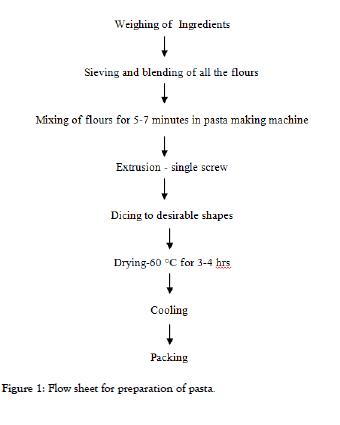
Figure 1. Flow sheet for preparation of pasta.
| Trails | Component A Green leafy vegetable flour (g) | Component B Pulses flour (g) | Component C Millet flour (g) | Pomegranate peel powder (g) |
|---|---|---|---|---|
| 1 | 10 | 35 | 55 | 2 |
| 2 | 12.5 | 35 | 52.5 | 2 |
| 3 | 15 | 35 | 50 | 2 |
| 4 | 14.1667 | 34.1667 | 51.6667 | 2 |
| 5 | 14.1667 | 32.9167 | 52.9167 | 2 |
| 6 | 12.9167 | 34.1667 | 52.9167 | 2 |
| 7 | 12.5 | 32.5 | 55 | 2 |
| 8 | 14.1667 | 31.6667 | 54.1667 | 2 |
| 9 | 15 | 30 | 55 | 2 |
| 10 | 12.9167 | 32.9167 | 54.1667 | 2 |
| 11 | 15 | 32.5 | 52.5 | 2 |
| 12 | 11.6667 | 34.1667 | 54.1667 | 2 |
| 13 | 13.3333 | 33.3333 | 53.3333 | 2 |
Table 1. Multi component mixture design matrix with possible runs.
Analytical methods
Physico-chemical composition of raw materials:Each pasta sample prepared was analysed for carbohydrates, crude protein, crude fat, moisture content, total ash content, and water absorption. All the testing methods were performed according to the official methods of analysis of the Association of Official Analytical Chemists [8].
Moisture content: Weighed sample (5 g) was dried in hot air oven at 130°C for 1 hour and moisture content in percent was calculated from loss of weight of sample [8].
Ash content:Weighed (5 g) of sample was kept in a muffle furnace at 550°C for 5 hours, weighed and results were expressed in percent [8].
Protein content: Protein content of raw materials and pasta was determined by Kjeldhal method and a general composite conversion factor 6.25 was used was used [8].
Crude fat content: Fat analysis of samples and raw materials was carried out using soxhlet apparatus. Weighed sample (5 g) was taken in thimble. After the extraction petroleum ether was recorded and collected and fat contained in flask was estimated [8].
Sensory evaluation
The selected and developed pasta samples were presented for the sensory evaluation. Selected products were cooked in boiling water for five min. Then the pasta was allowed to drain through a strainer for 5 min and it was tempered with equivalent amount of oil, ginger-garlic pate, sauce, chilli, onion and salt. Hedonic sensory evaluation of pasta was conducted within 25 volunteers including 15 girl students, four boy students, two female teachers and two male teachers and two lab technicians aged 22 to 40. They were instructed to evaluate the samples with regards to given sensory characteristics such as color, taste, flavor, texture and overall acceptability and to indicate the intensity of the specified characteristics by giving the appropriate number related to the 9 point hedonic scale [9-15].
Hedonic scale: Like extremely-9, Like very much-8, Like moderately-7, Like slightly-6, Neither like nor dislike-5, Dislike slightly-4, Dislike moderately-3, Dislike very much-2, Dislike extremely-1.
Experimental design
In the Current study, multi component mixture design was used for studying the three independent factors: pulses flour X2, millets flour X1, and green leafy vegetable flours X3 on the overall softness (1) acceptability (2) cooking loss (3) of the pasta. A total of 13 experimental combinations were performed with respect to the three independent factors.
In the Current study, multi component mixture design was used for studying the three independent factors: pulses flour X2, millets flour X1, and green leafy vegetable flours X3 on the overall softness (1) acceptability (2) cooking loss (3) of the pasta. A total of 13 experimental combinations were performed with respect to the three independent factors
Results and Discussion
In the present study, the millets and pulses were used in the formulation of pasta instead of using wheat flour. These are reported to be rich in dietary fibre content. Pulses flour incorporation in the formulation of pasta increased protein content and dietary fibre content while improving the protein quality of product.
Ash content
The values for ash content varied significantly among all the flours (Table 2). Ash represents the inorganic matter present in a particular sample. Among all the used raw materials, finger millet flour has minimum ash content. Ash content of other raw materials varied from 1.93 to 3.54 (Figure 2).
Figure 2: Graph showing the ash content of ingredients.
| Ingredients | Ash content (%) | Fat content (%) | Protein content (%) | Crude fiber content (%) | Carbohydrate content (%) |
|---|---|---|---|---|---|
| Bengal gram flour | 3.3 | 5.11 | 18.77 | 25.22 | 39.56 |
| Green gram flour | 3.54 | 1.14 | 22.53 | 17.04 | 46.13 |
| Black gram flour | 3.35 | 1.58 | 21.97 | 20.41 | 43.99 |
| Kodo millet flour | 2.83 | 1.4 | 8.3 | 11.18 | 65.9 |
| Foxtail millet flour | 3.37 | 4.3 | 12.3 | 6.7 | 60.2 |
| Fingermillet flour | 1.93 | 1.92 | 7.16 | 3.6 | 66.82 |
| Spinach powder | 3.7 | 0.64 | 2.14 | 2.38 | 2.05 |
| Broccoli powder | 2.7 | 0.37 | 2.82 | 2.6 | 6.64 |
| Pomegranate peel powder | 5.07 | 3.36 | 3.46 | 17.63 | 59.98 |
Table 2. Proximate composition of raw materials.
Crude fat content
Statistically significant variations were observed in all the flours with regard to crude fat (Table 2). Percent fat content of flours ranged between (0.37-5.11)% minimum for broccoli flour and maximum for Bengal gram flour (Figure 3).
Figure 3: Graph showing the crude fat content of ingredients.
Crude fibre content
Significant differences were observed in fibre content of different flours (Table 2). Bengal gram had highest amount of fiber (25.22%) followed by blackgram flour (20.41%) (Figure 4).
Figure 4: Graph showing the crude fibre content of ingredients.
Carbohydrate content
The carbohydrate content of all used raw materials varied significantly from each other (Table 2). Finger millet flour (66.82%) has high carbohydrate content followed by kodo millet flour (65.9%). Spinach (2.05%) has the least carbohydrate content (Figure 5).
Figure 5: Graph showing the carbohydrate content of ingredients.
Protein content
Protein content of flours varied significantly (Table 2). Among various flours green gram flour (22.53%) has highest protein content followed by blackgram flour (21.97%) and Bengal gram flour (18.77%). There was much variation in protein content of all the flours which ranged from (2.14-22.53)% (Figure 6).
Figure 6: Graph showing the carbohydrate content of ingredients.
Proximate composition of pasta
Pasta with different level of pulses, millets and green leafy vegetables blend differed significantly from each other with respect to their chemical composition (Table 3). Among all, pasta trail-2 (millets flour (X1-52.5%), Pulses flour (X2-35%), green leafy vegetables powder flour (X3-12.5%) had the highest protein content (12.743%), Crude fat content (2.313%) and crude fibre content (12.657%). Not much variation was found in different blends of pasta for ash, which is ranged from (3.211%-3.712%).
| S.No | Components | Proximate composition | ||||||
|---|---|---|---|---|---|---|---|---|
| Trails | Green leafy vegetable flour (g) | Pulses flour (g) | Millet flour (g) | Protein | Ash | Crude Fat | Carbohydrate | Dietary Fibre |
| Control | Refined wheat flour 100 g | 10.412 | 3.942 | 3.0945 | 69.738 | 7.651 | ||
| 1 | 10 | 35 | 55 | 12.712 | 3.272 | 2.0855 | 50.9185 | 11.787 |
| 2 | 12.5 | 35 | 52.5 | 12.743 | 3.211 | 2.313 | 46.498 | 12.657 |
| 3 | 15 | 35 | 50 | 12.3742 | 3.305 | 1.9376 | 47.929 | 11.5271 |
| 4 | 14.1667 | 34.1667 | 51.6667 | 12.3324 | 3.634 | 2.2739 | 51.795 | 11.461 |
| 5 | 14.1667 | 32.9167 | 52.9167 | 12.184 | 3.571 | 2.2713 | 48.773 | 11.2877 |
| 6 | 12.9167 | 34.1667 | 52.9167 | 12.4174 | 3.684 | 2.2979 | 52.642 | 11.5264 |
| 7 | 12.5 | 32.5 | 55 | 12.249 | 3.712 | 2.3056 | 49.947 | 9.8075 |
| 8 | 14.1667 | 31.6667 | 54.1667 | 12.006 | 3.451 | 2.2716 | 49.129 | 11.165 |
| 9 | 15 | 30 | 55 | 11.786 | 3.482 | 2.253 | 48.976 | 10.9005 |
| 10 | 12.9167 | 32.9167 | 54.1667 | 12.27 | 3.339 | 2.8369 | 50.7941 | 11.3523 |
| 11 | 15 | 32.5 | 52.5 | 12.082 | 3.651 | 2.2563 | 49.5265 | 9.679 |
| 12 | 11.6667 | 34.1667 | 54.1667 | 12.501 | 3.236 | 1.9773 | 53.274 | 11.5906 |
| 13 | 13.3333 | 33.3333 | 53.3333 | 12.291 | 3.521 | 2.287 | 49.279 | 11.395 |
Table 3. Proximate composition of pasta.
While crude fat content of pasta varied from 1.9773-2.8369, the crude fibre content of pasta varied from 9.679-12.657. The protein content of pasta varied from 11.786-12.743.
Protein content varied significantly with each composition. Among various trails trail-2 (12.743%) has highest protein content followed by T1, T12. There is not much variation of all the trails which is ranged from 11.786%-12.743% (Figure 7).
Figure 7: Protein content of pasta for various trails.
Ash content varied significantly with each composition. Among various trails trail-2 (3.211) has less ash content followed by T12, T1. There is not much variation of all the trails which is ranged from 3.211%-3.712%. Trail-7 has the highest ash content (Figure 8).
Figure 8: Ash Content of pasta for various trails.
Crude fat content varied significantly with each composition. Among various trails trail-2 (2.313%) has moderate protein content followed by T10, T1. There is not much variation of all the trails which is ranged fromn1.9376%-2.984%. The trail 1 has the highest crude fat content and the trail 3 has the lowest crude fat content (Figure 9).
Figure 9: Crude fat content of pasta for various trails.
Carbohydrates content varied significantly with each composition. Among various trails trail-2 has lowest carbohydrate content followed by T3, T5. There is much variation of all the trails which is ranged from 46.498%-53.274%. Trail 12 has the highest carbohydrate content (Figure 10).
Figure 10: Carbohydrate content for various trails.
Dietary fiber content varied significantly with each composition. Among various trails trail-2 has highest dietary fiber content followed by T1, T3. There is not much variation of all the trails which is ranged from 9.679%-12.657% (Figure 11).
Figure 11: Dietary fiber content of pasta for various trails.
Sensory evaluation
The results indicated that pasta prepared with these flours had higher, significant, sensory scores, except in colour in comparison with control. A reduction in colour value was obtained by increasing level of green leafy vegetable flour in pasta. Pasta fortified with millets, pulses and green leafy vegetable flours had significant higher taste scores than control and the taste were increased with the increase of pulses flour level. The overall acceptability value had a significant increase as pulses flours levels increased (Table 4 and Figure 12).
Figure 12: Rosette graphs showing colour, flavour, texture/mouthfeel, apperance, overall acceptability of pasta for various trails.
| S. No. | Sensory attributes | ||||
|---|---|---|---|---|---|
| Trails | Colour | Flavour | Texture/mouth feel | Appearance | Overall acceptability |
| Control | 8.5 | 8.05 | 8.2 | 8.45 | 8.24 |
| T1 | 8.1 | 7.9 | 8.1 | 8 | 8.03 |
| T2 | 8.4 | 8.1 | 8.25 | 8.2 | 8.26 |
| T3 | 8.19 | 8 | 7.95 | 7.9 | 7.97 |
| T4 | 8 | 7.4 | 7.85 | 7.5 | 7.76 |
| T5 | 7.9 | 7.4 | 7.8 | 7.4 | 7.7 |
| T6 | 7.9 | 7.38 | 7.75 | 7.33 | 7.66 |
| T7 | 7.82 | 7.35 | 7.5 | 7.3 | 7.6 |
| T8 | 8.08 | 7.6 | 7 | 7.55 | 7.65 |
| T9 | 7.75 | 7.05 | 7 | 7 | 7.37 |
| T10 | 7.6 | 7.05 | 7.33 | 6.95 | 7.47 |
| T11 | 8.07 | 7.55 | 7 | 7.5 | 7.65 |
| T12 | 8.2 | 8.05 | 7.1 | 8 | 7.78 |
| T13 | 8.1 | 7.5 | 7.25 | 7.45 | 7.55 |
Table 4. The effect of addition of flours in different levels on sensory properties of pasta.
Conclusions
Incorporating novel ingredients in commonly consumed foods with the means of improving the nutritional profile and functional properties has become a novel trend in food industry. The composite flour mixtures of pulses, millets, green leafy vegetables provide the complementation of nutrition balance of diet. Pulses proteins are low in methionine and cysteine like sulfur containing amino acids whereas millet proteins are deficient in lysine. So the combination of both improves the protein quality of product. For the formulation of nutritionally enhanced pasta, different flour mixtures were prepared by mixing the pulses, millets, green leafy vegetables flours in different ratios.
According to the obtained results, the possible incorporation of these flours in pasta formulation was millets flour (X1-52.5%), Pulses flour (X2-35%), and green leafy vegetables powder flour (X3-12.5%) without affecting the sensory and textural properties. This product has the highest dietary fibre content, highest protein content, low GI and it was the most sensory preferable product among all the developed products. The blend of all these flours was used to improve the sensory properties of pasta. Utilizing the resources of multi component mixture design and sensory analysis, it was possible and optimizes the formulation of a nutritive, tasty product. So this pasta has a good potential of bringing good health benefits for the public health.
REFERENCES
- Dutcosky SD, Grossmann MV, Silva RS, Welsch AK. Combined sensory optimization of a prebiotic cereal product using multicomponent mixture experiments. Food Chem. 2006;98:630-638.
- Tudorica CM, Kuri V, Brennan CS. Nutritional and physicochemical characteristics of dietary fiber enriched pasta. J Agric Food Chem. 2002;50:347-356.
- Kaur G. Development of technology for dietectic pasta. M.Sc. thesis, Punjab Agricultural University, Ludhiana, India. 2009.
- Sicignano A, Di Monaco R, Masi P, Cavella S. From raw material to dish: pasta quality step by step. J Sci Food Agric. 2015;95:2579-2587.
- Miller JB, Price JM, Steinbeck K, Caterson I. Dietary glycemic index: health implications. J Am Coll Nutr. 2009;28:446S-449S.
- Rani S, Singh R, Kamble DB, Upadhyay A, Kaur BP. Structural and quality evaluation of soy enriched functional noodles. Food Biosci. 2019;32:100465.
- Silva E, Birkenhake M, Scholten E, Sagis LM, Van der Linden E. Controlling rheology and structure of sweet potato starch noodles with high broccoli powder content by hydrocolloids. Food Hydrocoll. 2013;30:42-52.
- Horwitz W. Official methods of analysis of the Association of Official Analytical Chemists (AOAC). 2000.
- Romelle FD, Rani A, Manohar RS. Chemical composition of some selected fruit peels. Eur J Food Sci Technol. 2016;4:12-21.
- Kaur G, Sharma S, Nagi HP, Dar BN. Functional properties of pasta enriched with variable cereal brans. J Food Sci Technol. 2012;49:467-474.
- Wood JA. Texture, processing and organoleptic properties of chickpea-fortified spaghetti with insights to the underlying mechanisms of traditional durum pasta quality. J Cereal Sci. 2009;49:128-133.
- Goñi I, Gamazo CV. Chickpea flour ingredient slows glycemic response to pasta in healthy volunteers. Food Chem. 2003;81:511-515.
- Bustos MC, Perez GT, León AE. Sensory and nutritional attributes of fibre-enriched pasta. LWT-Food Sci Technol. 2011;44:1429-1434.
- Petitot M, Boyer L, Minier C, Micard V. Fortification of pasta with split pea and faba bean flours: Pasta processing and quality evaluation. Food Res Int. 2010;43:634-641.
- Bell SJ, Sears B. Low-Glycemic-Load Diets: Impact on obesity and chronic diseases. Crit Rev Food Sci Nutr. 2003;43:357-377.
Citation: Pachipulusu M, Jarugulla S, Macharla A, Thanda R (2020) Development and Optimization of Low Glycemic Index Pasta Using Multi Component Mixture Design. J Food Process Technol 11:839. doi: 10.35248/2157-7110.20.11.839
Copyright: © 2020 Pachipulusu M, et al. This is an open-access article distributed under the terms of the Creative Commons Attribution License, which permits unrestricted use, distribution, and reproduction in any medium, provided the original author and source are credited.

